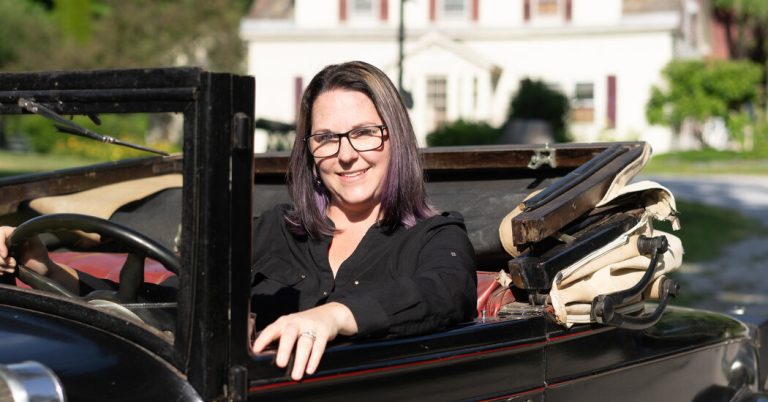Acting on a tip from an acquaintance, Cameron Luther uncovered a yellow 1966 Porsche in a garage in Monterey, California. It was dusty and on jack stands with the wheels off. Apparently he hadn’t run in a long time.
The owner was a retired pilot, now 94, who had started a brake business a decade ago. Unrestored, but beautifully maintained, it was just the kind of car Mr. Luther always wanted. The owner, however, did not want to sell, but said that if Mr. Luther could get the car running and give it one last ride, he would sell it to him.
Mr. Luther spent the next two months commuting to Monterey, five hours from his job in Santa Monica, to fix the Porsche. True to his word, the retired pilot completed the deal and late last year, aged just 23, Mr Luther became the owner of a 1966 Porsche 911.
In general, collectors are often drawn to the cars of their youth, the ones they wanted but couldn’t afford. Cars from the “Fast & Furious” movies, video games like “Forza” and “Gran Turismo,” even dorm room posters attract many young car enthusiasts.
But a subset of millennial and Gen-Z car collectors have eschewed their own nostalgia and set their sights on the cars of their parents, grandparents and great-grandparents. Citing the inherent simplicity, quality and charm of the vehicles, these collectors acquire the skills to keep these cars on the road and use them as daily drivers.
Kyle Blake, 40, who works in the health care industry in Cumberland, Md., said he grew up in the back seat of antique cars, going on tours and playing with old cars with his grandfather. But his fascination with vintage vehicles predates even his grandfather’s time.
Mr. Blake’s garage looks like a nearly century-old used car lot. He owns a 1910 Hupmobile, 1914 Buick, 1920 Dodge Brothers, 1927 Ford Model TT pickup, two Ford Model A’s and a 1932 Dodge Brothers. His “new” cars are a Mercedes-Benz 1973 450SE and a 1973 MGB.
The Ford pickup hadn’t been run in more than 45 years when he bought it in 2015, but he made a cheeky bet with his friends that he could get it running in an hour. It took an hour and a half, but it speaks to the simplicity and maintainability of these old cars.
“I’m fascinated by all the different approaches to what has been a developing technology,” he said. “Pedal functions and gear patterns weren’t standardized yet, and there were so many different attempts at it before manufacturers agreed on a standard. The thrill of driving, which includes wind, vibrations and in the case of the 1920 Dodge Brothers, the creak of the wooden wheel spokes and body frame, gives you a horse and body feel at a top speed of less than 50 mph.
He said 1973 was a pivotal year for cars.
“After 1973, emissions controls became very complicated and cars became much more difficult to work with lots of vacuum lines and computers,” he said. “I prefer the simplicity of pre-war cars.”
Mr Blake is also doing what he can to attract other young people to the old car hobby. In 2015, he organized a tour of about 30 people on the Lincoln Highway, an early transcontinental road, by an under-45 chapter of the Antique Automobile Club of America he founded.
Tabetha Kanter, 36, a hotelier in Arlington Vt, got her interest in vintage cars from her parents and grandparents when she was growing up in rural Colorado. She owns a 1973 Mini Cooper S and a 1928 Packard convertible coupe, which has not been restored and was purchased by the daughter of the man who had owned it since the early 1960s.
“I find the cars of the 1980s and 1990s to be the beginning of the era where cars had too much technology and the driver was pushed more and more out of the equation,” Ms Kanter said. “The completely analog driving experience of vintage cars is wonderful, everything from the feel of the old road-biased tires to the out-of-sync gearshift for the gears is unique.”
Ms. Kanter said she bought the Mini Cooper sight unseen in San Diego and then drove it back to Colorado, a trip of about 1,100 miles on mostly back roads, an impressive feat for a 50-year-old car that weighs about 1,450 pounds (wing, in compared to the average modern car, which weighs about 4,000 pounds) and rolls on tiny 10-inch wheels.
Like Ms. Kanter and Mr. Blake, Mr. Luther, who is a car specialist for the classic car auction house Gooding & Company, also uses his vintage Porsche as one would a modern car, for tours, rallies, errands and fun. leads.
“While it’s not really fast by today’s standards, it’s more than powerful enough to keep up with modern traffic and the brakes are safe and effective,” he said. “Beyond mechanical simplicity and quality engineering,” the jewel-like gauges and wooden steering wheel are gorgeous. “Unlike modern performance cars, you can test most of the car’s capabilities at legal speeds, going through most gears and shifting at high revs, without putting yourself or others at risk.”
He has no intention of selling his prized car, which is worth about $100,000. The previous owner was in his 40’s when he started his 50 year journey with the car. Since Mr. Luther acquired it young, his time behind the wheel could last until the dawn of the next century, or at least past the vintage Porsche’s 100th birthday.




